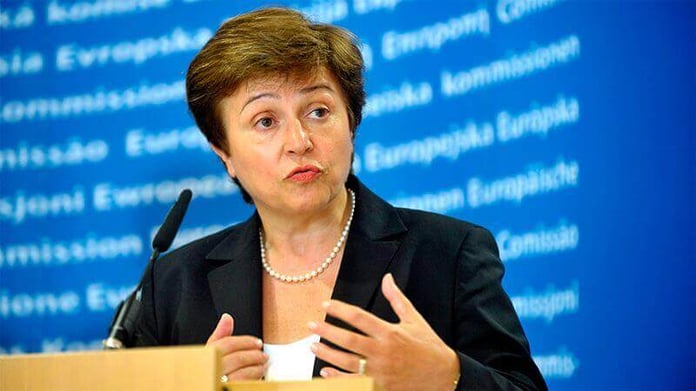
In line with private screenings and even your own government, which are even somewhat more pessimistic, the International Monetary Fund (IMF) worsened the estimates it had made in June on the Argentine economy and projected that in 2020 the GDP it will fall 11.8%, instead of the 9.9% as expected in the middle of the year.
This is reflected in the report of World Economic Outlook (WEO), featured in Washington by the Fund’s chief economist, Gita Gopinath, within the framework of IMF Annual Assembly and the World Bank. As for the recovery expected for 2021, the forecast is more encouraging, as it rose from 3.9% to 4.9%, reported the IMF.
Figures around 2020 are in line with the forecast for government, which reported in the project Budget 2021 that the economy would fall 12.1% this year, and with the recent publication of the US-led body David Malpass, which revised the estimate of recession in Argentina, from -7.3% to -12.3%, the largest drop in the region after Venezuela.
According to him WEO, Argentina will be the country with the third-largest drop in South America, after Venezuela, which will sink 25%, and Peru, whose product fall will climb to 13.9%. Fourth, it is located in Ecuador, with an estimated decrease of GDP 11 percent. Brazil, the country’s main trading partner, will have an economic fall of 5.8%, according to the Background, Y Mexico, 9%. In both cases, the forecasts are more optimistic than those reported in June.
Regarding the region, the forecasts are somewhat more encouraging compared to those of June: Latin America and the Caribbean will suffer a contraction of their GDP from 8.1% in 2020, compared to 9.4%, and would recover 3.6% in 2021. “For many emerging markets and developing economies, excluding China, the outlook remains precarious. This reflects a combination of factors: the continuing spread of the pandemic and overwhelmed health care systems; the greater importance of severely affected sectors, such as tourism; and the greater dependence on external financing, including remittances ”, says the report of the body that directs Kristalina Georgieva.
The document also gives an account of projections in retail inflation matter, but in the case of Argentina, mention figures neither for this year nor for 2021. “Fiscal and inflation variables are excluded from the publication for 2021–25 and 2020–25, respectively, as these are largely linked to the program negotiations still pending”, indicates the document.
The Argentine government Discussions began with the agency’s technicians to advance a new agreement to restructure USD 45 billion maturities that expire in the next three years. With this objective in mind, a mission led by the deputy director of the Department for the Western Hemisphere, Julie Kozak, and the head of the mission, Luis Cubeddu, to exchange information about the country with officials from different areas and listen to various sectors, businessmen, trade unions and society.
Upon his return to Washington, the agency officials indicated that Argentina faces “complex economic difficulties” and that “policies that restore confidence” must be adopted, but at the same time he stressed that these measures must be calibrated to promote economic recovery.
Other figures for Argentina
Regarding the current account balance, the Background projected to be around 0.7% of the GDP this year and 1.2% in 2021. And in terms of unemployment, the agency’s estimates indicate 11% for 2020 and 10.1% for 2021. The latest data reported by The Eastern Herald corresponds to the second quarter (the worst in terms of Covid) and stood at 13.1%.
To make estimates on Argentina, the IMF reported that the financial projections are based on the information available on budget execution, the plans established in the Budget for the national and provincial governments, the fiscal measures announced by the authorities, and the macroeconomic projections of the agency’s staff. In turn, the monetary policy assumptions are consistent with a modest real appreciation this year and the need for monetary financing of the fiscal deficit, with reabsorption of that liquidity.

Regarding the world economic scenario, the current projection of the Background it foresees a contraction of 4.4%, somewhat less severe than that carried out in June when the estimate indicated a fall of 4.9%. As indicated by the agency, the review reflects the results of the GDP better than expected for the second quarter, mainly in advanced economies.
Global growth is projected at 5.2% in 2021, reflecting the more moderate recession projected for 2020 and consistent with expectations of a persistent social distancing. “Following the contraction in 2020 and the recovery in 2021, it is expected that the level of World GDP in 2021 is a modest 0.6% higher than in 2019. Growth projections imply wide gaps of negative production and high unemployment rates this year and in 2021 in advanced and emerging market economies ”, the IMF.












